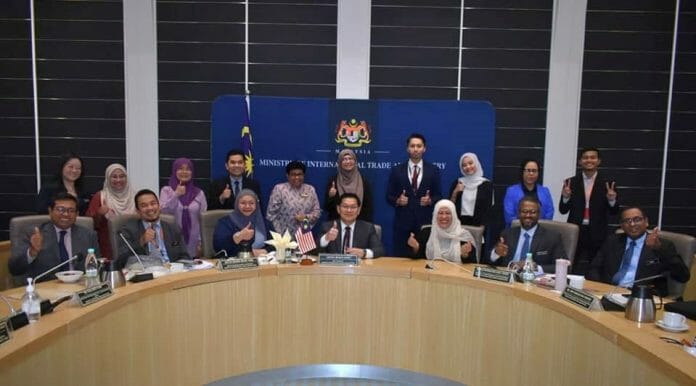During the 19th China-ASEAN Business and Investment Summit (CABIS) with Chinese CEOs, Deputy Minister of International Trade and Investment Datuk Lim Ban Hong regaled on the extraordinary journey of ASEAN and China,
instituted in Kuala Lumpur back in 1991, that has gained from strength to strength over the years and consequently elevated to a greater height of strategic partnership.
He added that the relationship has resulted in ASEAN and China becoming the largest trading partner for each other last year, with the total trade showing an increase of 28% amounting to US$878.2 billion according to China Statistics. Besides being the largest trading partner in 2021, China was also the largest export market and largest import source for ASEAN.
As outlined in the ASEAN Comprehensive Recovery Framework (ACRF), both parties have assured to keep the supply chain connectivity uninterrupted; and facilitate the movement of essential goods and services, as well as people. To create better trade and investment opportunities, we need to bring ourselves closer by working together in addressing unnecessary barriers and new restrictive trade measures that could hamper regional economic growth.
Touching on the newly implemented Regional Comprehensive Economic Partnership (RCEP) Agreement, the Deputy Minister said it would be a good instrument for both ASEAN and China to capitalise on both the trade opportunities it provides, as well as to expedite regional economic recovery.
Adding that, Malaysia has become an important import source for China particularly for intermediate goods and primary commodities. Malaysia has emerged as China’s largest import source among the ASEAN Member States. The strong linkages between multinational corporations (MNCs) investing in China and in Malaysia have also contributed to the strong two-way flow of trade in electrical and electronic products.
- Despite the pandemic, Datuk Lim quoted the economic ties continued to flourish. China has been Malaysia’s largest trading partner since 2008 and accounted for 18.9% of Malaysia’s global trade in 2021. According to Chinese trade statistics, our overall two-way trade grew 34.5% year-on-year to USD176.8 billion, which is a record high despite the pandemic. It is encouraging to note from the latest Chinese trade statistics that Malaysia-China overall trade in the first 8 months of 2022 has reached USD131.21 billion, growing 21.1% from the corresponding period last year. In 2021 alone, a total of 43 manufacturing projects were approved from China worth USD3.98 billion, generating nearly 14,000 employment opportunities in Malaysia.
- In view of this, he said Malaysia welcomes more business collaboration from China in the new and complex growth areas, as this will foster innovation and strengthen supply chain linkages between Malaysian and Chinese companies. The resumption of travel links between Malaysia and China is a significant step in the right direction and Malaysia looks forward to receiving
more business travellers from China to Malaysia. - Malaysia, being an early supporter of BRI, remains committed to deepening economic ties with all BRI participating countries. In 2013, Malaysia and China established solid and progressive economic cooperation when both countries launched the Malaysia-China Kuantan Industrial Park and China-Malaysia Qinzhou Industrial Park under the auspicious “Two Countries, Twin Parks” initiative. Over the years, the industrial parks have progressed substantially, bringing tangible benefits to both countries. Today, Malaysia-China Kuantan Industrial Park (MCKIP) has become among the thriving industrial park in Malaysia, featuring some of the largest foreign direct investment recipients in Malaysia, while the CMQIP has attracted investments from various parts of the world. More importantly, our collaborations have created substantial spin-offs to the local industries including transport and logistics; retail; port-related services; as well as businesses and the local community.
- China has been instrumental to ASEAN, particularly being one of the earliest partners to offer assistance during this pandemic. Datuk Lim is optimistic that ASEAN and China can continue enhancing and elevating this strategic partnership to a higher level.









